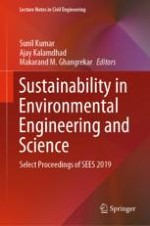2021 | OriginalPaper | Chapter
Estimation of Greenhouse Gases in the Ambient Air
Authors : Papiya Mandal, Naveen Kumar, Ajey Kumar Patel
Published in: Sustainability in Environmental Engineering and Science
Publisher: Springer Singapore
Activate our intelligent search to find suitable subject content or patents.
Select sections of text to find matching patents with Artificial Intelligence. powered by
Select sections of text to find additional relevant content using AI-assisted search. powered by
